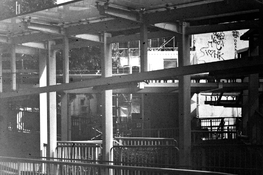Well, you got an image (and perhaps a little mishap with the bulk loader; I tink I recognize the problem...) I find it hard/impossible to tell what the spectral sensitivity is. Let's wait and see what an actual prism gives.
-
Welcome to Photrio!Registration is fast and free. Join today to unlock search, see fewer ads, and access all forum features.Click here to sign up
You are using an out of date browser. It may not display this or other websites correctly.
You should upgrade or use an alternative browser.
You should upgrade or use an alternative browser.
Developing ultra low ISO films for direct duplicating
-
A
- Thread starter svetoklik
- Start date
Recent Classifieds
-
For Sale FS: Sinar P 8x10 Camera
- Started by B.S.Kumar
-
For Sale FS: Sinar P 5x7 Camera
- Started by B.S.Kumar
-
For Sale FS: Sinar P 4x5 Camera
- Started by B.S.Kumar
-
For Sale Nikon FE (blk) w/ 35-70 f/2.8 (Read)
- Started by Acere
-
Sold SOLD!
- Started by B.S.Kumar
Forum statistics
That film appears to be ortho sensitized. It does catch a little of the red/orange spectrum. Certainly not the the level of the indigo, blue region, or even the green/yellow region, but it isn't completely blind to orange/red at 0.3 ISO. Comparing the 1.5ISO image, you can still see a faint line where the red wavelengths are landing on the background canvas.
Koraks, the glass crystal is acting as an actual prism, a "real" triangular prism will give a very similar/identical result.
Koraks, the glass crystal is acting as an actual prism, a "real" triangular prism will give a very similar/identical result.
Koraks, the glass crystal is acting as an actual prism, a "real" triangular prism will give a very similar/identical result.
I understand what we're looking at. Again, try again with a proper prism. Given the discontinuity of the spectrum (more patches, actually) this crystal projects, it's hard to say anything conclusive.
Another roll of Kodak 2468 development results, and thanks to @koraks.
Shot at 0.3~0.6 ISO. Developed in PC-TEA (Phenidone and Ascorbic Acid, 1:25), agitated for the first 5 minutes, then left to stand for 20 minutes at 20°C.
As slides, the development failed, and the image was very pale (the unexposed part should be completely black, but it was only light gray). I didn't expect that the purchased PCTEA (Phenidone, works well in fomapan 100) and the previous homemade PCTEA-variant (Dimezone S) would be so different. This result is similar to “https://www.aperturepreview.com/an-unknown-positive-microfilm.”
Combining our results, I believe D76, HC110 and standard PCTEA are not very effective here, while PCTEA (Dimezone S) and D8 have good results.
Shot at 0.3~0.6 ISO. Developed in PC-TEA (Phenidone and Ascorbic Acid, 1:25), agitated for the first 5 minutes, then left to stand for 20 minutes at 20°C.
As slides, the development failed, and the image was very pale (the unexposed part should be completely black, but it was only light gray). I didn't expect that the purchased PCTEA (Phenidone, works well in fomapan 100) and the previous homemade PCTEA-variant (Dimezone S) would be so different. This result is similar to “https://www.aperturepreview.com/an-unknown-positive-microfilm.”
Combining our results, I believe D76, HC110 and standard PCTEA are not very effective here, while PCTEA (Dimezone S) and D8 have good results.
Attachments
Hi,
I just got some Kodak 2468 35mm rolls for practice. I was told the ISO is 0.8, The lowest ISO of my Canon EOS630 is 6, and it has up to +/-5 EVs compensation range with 1/2EV step. My understanding ISO 6 ; 3; 1.5; 0,75 need 2x exposure time in between (1EV span). To get correct exposure combination, is the ISO6 + 3EVs compensation would work? Someone told me have to be +5 EVs . I am confused Thanks!
I just got some Kodak 2468 35mm rolls for practice. I was told the ISO is 0.8, The lowest ISO of my Canon EOS630 is 6, and it has up to +/-5 EVs compensation range with 1/2EV step. My understanding ISO 6 ; 3; 1.5; 0,75 need 2x exposure time in between (1EV span). To get correct exposure combination, is the ISO6 + 3EVs compensation would work? Someone told me have to be +5 EVs . I am confused Thanks!
Hi,
I just got some Kodak 2468 35mm rolls for practice. I was told the ISO is 0.8, The lowest ISO of my Canon EOS630 is 6, and it has up to +/-5 EVs compensation range with 1/2EV step. My understanding ISO 6 ; 3; 1.5; 0,75 need 2x exposure time in between (1EV span). To get correct exposure combination, is the ISO6 + 3EVs compensation would work? Someone told me have to be +5 EVs . I am confused Thanks!
You're correct, using ISO 6/+3EV result in an ISO of 0.75. I also recommend a +5 EV adjustment, which is about 0.2 ISO, if possible. Giving the film more light will reduce contrast and improve the grayscale transitions.
This film is a "Sanhuan SWII" microfilm originally produced in Tianjin, China.
It's said to be similar to Agfa Copex PAN or akin to Kodak ImageCapture Microfilm 1460. The original ISO (30 years ago?) is claimed to be 12, and the seller suggests developing it with D76 for 6 minutes. However, I'm entirely not sure with all of this.
Shot at ISO 10, PCTEA-variant (Dimezone S) 1:15, 7 min.It can be handheld for shooting during the day and is a relatively fine-grained negative film. I love the transitions in the clouds.
It's said to be similar to Agfa Copex PAN or akin to Kodak ImageCapture Microfilm 1460. The original ISO (30 years ago?) is claimed to be 12, and the seller suggests developing it with D76 for 6 minutes. However, I'm entirely not sure with all of this.
Shot at ISO 10, PCTEA-variant (Dimezone S) 1:15, 7 min.It can be handheld for shooting during the day and is a relatively fine-grained negative film. I love the transitions in the clouds.
Attachments
That is an excellent pair of results!
New experiment with two formulas similar to POTA on Kodak 2468(EI 0.3~0.5).
POTA - Dimezone S
POTA - Michael R, the formula is from Michael R's work here.

Compared to the previous method:
PCTEA - Dimezone S
15~20 minutes:
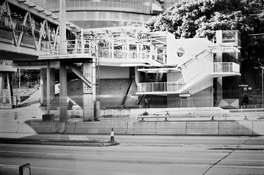
D-8 Developer Solution
POTA - Dimezone S
- 30g Anhydrous Sodium Sulfite
- 1.5g Dimezone-S
- Added water to 1L.
POTA - Michael R, the formula is from Michael R's work here.
- 20g Anhydrous Sodium Sulfite
- 1g Vitamin C
- 1g Dimezone-S
- Added water to 1L.

Compared to the previous method:
PCTEA - Dimezone S
- 40g TEA
- 4.5g Vitamin C
- 0.125g Dimezone-S
- 0.1g KBr
- Added water to 1L.(1:25)
15~20 minutes:

D-8 Developer Solution
- 30g Anhydrous Sodium Sulfite
- 15g Hydroquinone
- 12.5g NaOH
- 10g KBr
- Added water to 1L.
POTA - Michael R formulas on "Sanhuan SWII" microfilm:
With the adjusted ratio, it seems that this film can produce some images at EI 100. However, since the performance of the original film remains unknown, drawing any meaningful conclusions might be challenging. This is more for fun.
Modification 1. 20g Anhydrous Sodium Sulfite/0.4g Vitamin C /1.6g Dimezone-S/Added water to 1L/Develop for 12 min
ISO settings: 25, 50, 100, with the same scanning parameters.
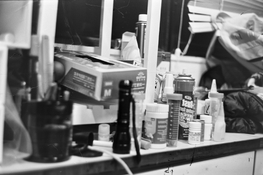

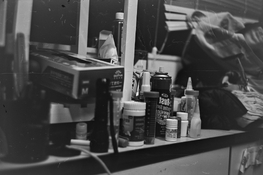
Modification 2. 20g Anhydrous Sodium Sulfite/0.2g Vitamin C /1.8g Dimezone-S/Added water to 1L/Develop for 20 min
ISO settings: 50, 100, with the same scanning parameters..
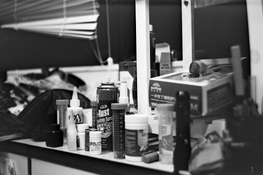

With the adjusted ratio, it seems that this film can produce some images at EI 100. However, since the performance of the original film remains unknown, drawing any meaningful conclusions might be challenging. This is more for fun.
Modification 1. 20g Anhydrous Sodium Sulfite/0.4g Vitamin C /1.6g Dimezone-S/Added water to 1L/Develop for 12 min
ISO settings: 25, 50, 100, with the same scanning parameters.



Modification 2. 20g Anhydrous Sodium Sulfite/0.2g Vitamin C /1.8g Dimezone-S/Added water to 1L/Develop for 20 min
ISO settings: 50, 100, with the same scanning parameters..


This is probably my closest result to the OP taget: low ISO, duplicating film, slides, and increased ISO—though not direct positive.
I recently tried some expired "Sanhuan SWII" microfilm (ISO 6–12, #83). With the POTA - Michael R developer, it can be shot as a negative at ISO 50–100, but with high contrast (#86). However, it performs well in reversal processing and can be used for slides at ISO 32–64, with an almost completely clear base.
Although this brand is really rare, it may serve as some kind of reference for similar microfilms. The seller claimed it was once rebranded as Agfa Copex PAN and has 200 lp/mm resolution, but I’m.....very skeptical.
First developer: 20g anhydrous sodium sulfite / 0.8g vitamin C / 0.8g Dimezone-S / 0.2g sodium thiocyanate / water to 1L / 17 minutes.
Ceric sulfate bleach, sodium bisulfite clearing, and final development with used PCTEA developer.
@EI 64:

I recently tried some expired "Sanhuan SWII" microfilm (ISO 6–12, #83). With the POTA - Michael R developer, it can be shot as a negative at ISO 50–100, but with high contrast (#86). However, it performs well in reversal processing and can be used for slides at ISO 32–64, with an almost completely clear base.
Although this brand is really rare, it may serve as some kind of reference for similar microfilms. The seller claimed it was once rebranded as Agfa Copex PAN and has 200 lp/mm resolution, but I’m.....very skeptical.
First developer: 20g anhydrous sodium sulfite / 0.8g vitamin C / 0.8g Dimezone-S / 0.2g sodium thiocyanate / water to 1L / 17 minutes.
Ceric sulfate bleach, sodium bisulfite clearing, and final development with used PCTEA developer.
@EI 64:

Last edited:
Ceric sulfate bleach
This is new to me. Details, please? Perhaps in a new thread in the correct section?
This is new to me. Details, please? Perhaps in a new thread in the correct section?
Cerium has long been known and sometimes experimentally used in this capacity. It's cost-prohibitive though, and I think there are environmental considerations against its use, too. If you look at e.g. Fuji patent literature on bleaches, you'll see it pop up regularly.
Okay, for those trying to be both safe and environmentally conscious, I guess we're back to peroxide and acetic acid -- which, though slow, ought to do the job just fine on microfilm type stocks.
This is new to me. Details, please? Perhaps in a new thread in the correct section?
This is just an experimental solution and hasn’t been optimized yet.....
1. Cerium(IV) sulfate tetrahydrate, 2.5 g
2. Concentrated sulfuric acid, 10 ml + 20 ml water (Caution!), or 100 ml of 10% dilute sulfuric acid
3. Stir until fully dissolved to form a clear orange-yellow solution. Dilute to 250 ml.
This bleaching solution from a old book(Glafkides) works, but is slow (may take tens of minutes). After several rolls, a white silver sulfate precipitate may form—just decant the clear solution to continue using. I think Acetic acid or methanesulfonic acid or Sodium bisulfate can also be used as alternatives.
4. Iron(III) nitrate nonahydrate, 5–10 g (accelerator and oxidizer)
5. Cysteine, 0.05 g (optional accelerator—use only a tiny amount)
Adding iron nitrate and a pinch of cysteine speeds up bleaching to about ten minutes. I started with 0.5 g of iron(III) nitrate, as it was still slow, I added two more spoonfuls. The idea of adding cysteine comes from a Fuji patent(US4322493A), but I’m not sure about its exact amount and effect.
6. After bleaching, rinse the film with a 1% sodium bisulfite solution before re-exposure.
100g Cerium sulfate is about $5~10 here, for my occasional film processing, I find them easy to store and non-very-toxic. I haven’t observed big issues with the microfilm mentioned earlier or Fomapan 400, except that the emulsion of Fomapan 400 melts at 38°C (I don’t know what I was thinking…).
Note: I just remembered my proportion is different from the original book, because of Harvey W. Yurow's article: "Cerium Reversal Bleach".
Interestingly, he mentions that the price of anhydrous cerium sulfate (99%) was $65 per 100 grams (Antec Inc) , including shipping.
Last edited:
Coincidentally, I had that open anyway, so I can share the source text for anyone who's interested. It's in part I, page 174.This bleaching solution from a old book(Glafkides)
PS:
I retract the earlier statement w.r.t. environmental or safety concerns; I just did a quick search to verify, but it doesn't seem that cerium as such as much of a concern either way, apart from Ce(IV) being an oxidizing agent. The fact it's not widely used as a commercial bleach evidently is mostly due to its cost.for those trying to be both safe and environmentally conscious, I guess we're back to peroxide and acetic acid
Well, still needs sulfuric acid, but it's less toxic/carcinogenic than potassium dichromate and won't soften emulsion like potassium permanganate.
I wonder if an analog of cerium could do the same job cheaper? Oh, Yttrium and Scandium. Never mind. And the rest of the lanthanides aren't much if any cheaper, either.
I wonder if an analog of cerium could do the same job cheaper? Oh, Yttrium and Scandium. Never mind. And the rest of the lanthanides aren't much if any cheaper, either.
Well, still needs sulfuric acid, but it's less toxic/carcinogenic than potassium dichromate and won't soften emulsion like potassium permanganate.
I wonder if an analog of cerium could do the same job cheaper? Oh, Yttrium and Scandium. Never mind. And the rest of the lanthanides aren't much if any cheaper, either.
I noticed you can buy concentrated sulfuric acid at the supermarket—every place has its own surprises. Here, 100g of cerium(IV) salt only costs $6. That’s about five times more than ferric sulfate, but I would not complaining. How much does it cost where you are?
One advantage of cerium ions is that they help harden the emulsion, unlike potassium permanganate. Other rare earth elements probably won’t work since they don’t form stable +4 compounds. Iron(III) salts might be an option—have you noticed this post?

Iron bleaching for reversal B&W film, works, but how to improve
(I'm not a native English speaker, so apologize for any gramma/spelling mistakes) I'm looking for some safe way to make reversal B&W films. Here are some bleach I found: 1. potassium dichromate + H2SO4 (Dangerous, I don't want to die or get cancer) 2. H2O2 +Citric Acid + EDTA + Sodium...
I suspect the “commercial” bleaches here are mainly iron(III) salts, with some cerium(IV) salt and a bit of accelerator. But if cerium(IV) salt is cheap enough, I’d just use more of it.
More sample images from it.
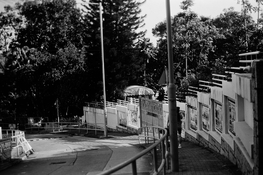

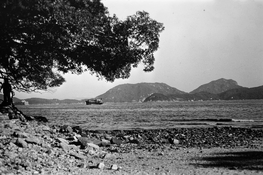
Last edited:
How much does it cost where you are?
I have no idea -- I know cerium oxide polishing rouge is only 2-3 times the price of tin oxide rouge and widely considered better in the telescope making community (and you can polish and figure an 8 inch primary mirror with 50 grams). I doubt one could directly convert cerium oxide into cerium (IV) sulfate, given the tendency for metals to hang onto oxygen...
Iron(III) salts might be an option—have you noticed this post?
This might be why adding iron (III) nitrate accelerates the bleaching action. Iron (III) is ferric, right? So the ferrous sulfate you can buy as a plant supplement would be iron (II) sulfate?
How much does it cost where you are?
Cerium sulfate retails around here at around €50/25g - assuming it'll actually be obtainable. Cerium(IV) oxide is significantly cheaper at around €50/100g.
Heated sulfuric acid can dissolve cerium dioxide over time to produce a cerium(IV) sulfate solution—but whether this is something we should try at home is another question. It is hot sulfuric acid...I doubt one could directly convert cerium oxide into cerium (IV) sulfate, given the tendency for metals to hang onto oxygen...
Ferrous sulfate (plant supplement) contains iron(II). If just add a small amount, the iron(II) will be oxidized to iron(III) by cerium(IV). Alternatively, bubbling air through the sulfuric acid-acidified iron(II) solution can also oxidize iron(II) to iron(III).So the ferrous sulfate you can buy as a plant supplement would be iron (II) sulfate?
This price is expensive... For me concentrated hydrogen peroxide is hard to get, and for some reason, 3% hydrogen peroxide disinfectant from the pharmacy and citric acid doesn’t work in bleach, even though catalyst tests show it can release oxygen.Cerium sulfate retails around here at around €50/25g - assuming it'll actually be obtainable. Cerium(IV) oxide is significantly cheaper at around €50/100g.
It is hot sulfuric acid...
Not when I can get it another way. I'm okay with storing a bottle of concentrated sulfuric in my photo chemicals cabinet, but less so with heating and stirring it...
I used Yurow's formulation of Cerium bleach some years ago, it works though slow. Wasn't aware that Ferric Nitrate is an accelerator for Ceric Sulphate. Or does it work synergestically as it does with Persulphate? I should give your formulation a try nevertheless. Would the film need a wash in EDTA after the bleach?
I have vague recollection that Cerium bleach has relatively poor capacity compared to Dichromate bleach and becomes much slow after the first use, I could be wrong. Thiourea in the stop bath indeed produces the cool effect that Yurow reports.
I have vague recollection that Cerium bleach has relatively poor capacity compared to Dichromate bleach and becomes much slow after the first use, I could be wrong. Thiourea in the stop bath indeed produces the cool effect that Yurow reports.
I used Yurow's formulation of Cerium bleach some years ago, it works though slow. Wasn't aware that Ferric Nitrate is an accelerator for Ceric Sulphate. Or does it work synergestically as it does with Persulphate? I should give your formulation a try nevertheless. Would the film need a wash in EDTA after the bleach?
I have vague recollection that Cerium bleach has relatively poor capacity compared to Dichromate bleach and becomes much slow after the first use, I could be wrong. Thiourea in the stop bath indeed produces the cool effect that Yurow reports.
0.5g of ferric nitrate speeds things up noticeably; two more spoonfuls makes it even faster. Cerium ions don’t show much color, so I just rinsed briefly with sodium bisulfite. If you use a lot of iron(III) ions, EDTA may be needed to prevent iron(II) ionsresidue and subsequent discoloration.
If the speed is too slow after using, it might be due to not enough sulfuric acid—some free acid is needed to solve silver. Glafkides’ original formula may not have enough sulfuric acid, which limits capacity (and he got the valence wrong in his book). A little cysteine might also help, but I haven’t compared yet.
Yurow’s cerium bleach gives cool results, but I don't need them so I didn’t add thiourea.
Last edited:
| Photrio.com contains affiliate links to products. We may receive a commission for purchases made through these links. To read our full affiliate disclosure statement please click Here. |
PHOTRIO PARTNERS EQUALLY FUNDING OUR COMMUNITY:  |



